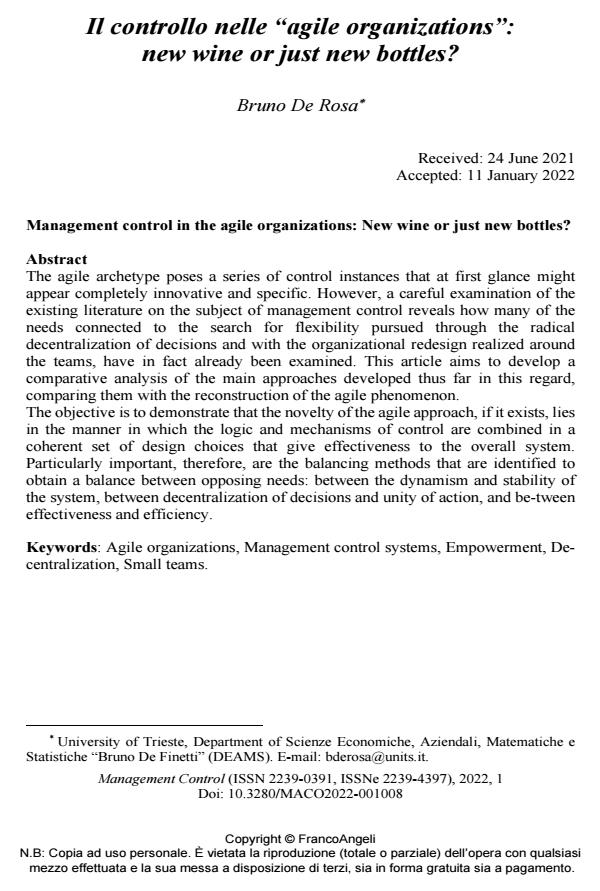Management control in the agile organizations: New wine or just new bottles?
Journal title MANAGEMENT CONTROL
Author/s Bruno De Rosa
Publishing Year 2022 Issue 2022/1
Language Italian Pages 28 P. 121-148 File size 1158 KB
DOI 10.3280/MACO2022-001008
DOI is like a bar code for intellectual property: to have more infomation
click here
Below, you can see the article first page
If you want to buy this article in PDF format, you can do it, following the instructions to buy download credits

FrancoAngeli is member of Publishers International Linking Association, Inc (PILA), a not-for-profit association which run the CrossRef service enabling links to and from online scholarly content.
The agile archetype poses a series of control instances that at first glance might appear completely innovative and specific. However, a careful examination of the existing literature on the subject of management control reveals how many of the needs connected to the search for flexibility pursued through the radical decentralization of decisions and with the organizational redesign realized around the teams, have in fact already been examined. This article aims to develop a comparative analysis of the main approaches developed thus far in this regard, comparing them with the reconstruction of the agile phenomenon. The objective is to demonstrate that the novelty of the agile approach, if it exists, lies in the manner in which the logic and mechanisms of control are combined in a coherent set of design choices that give effectiveness to the overall system. Particularly important, therefore, are the balancing methods that are identified to obtain a balance between opposing needs: between the dynamism and stability of the system, between decentralization of decisions and unity of action, and be-tween effectiveness and efficiency.
Keywords: Agile organizations, Management control systems, Empowerment, Decentralization, Small teams.
Bruno De Rosa, Il controllo nelle "agile organizations": new wine or just new bottles? in "MANAGEMENT CONTROL" 1/2022, pp 121-148, DOI: 10.3280/MACO2022-001008